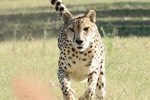Professor Nancy Curtin
Department: Comparative Biomedical Sciences
Campus: Hawkshead
Research Centres: Structure & Motion Laboratory
Nancy Curtin is a Professorial Research Fellow within the Structure & Motion Laboratory
Nancy Curtin was Professor Muscle Physiology in the Molecular Medicine Section of the National Heart and Lung Institute. She did her PhD under the supervision of Prof. Robert E. Davies (FRS) at the University of Pennsylvania, Philadelphia, PA, USA, investigating the low ATP usage for high force production during stretch of frog skeletal muscle. She was awarded a post-doctoral fellowship from the Muscular Dystrophy Association to continue research on energy transduction in muscle using heat measurements in the Dept of Physiology at University College London.
She joined the Physiology Department at Charing Cross Hospital Medical School as a Lecturer and continued research on energy turnover and efficiency of energy conversion during contraction. She developed techniques for studying isolated muscle using contractions that mimic normal function in vivo, and are therefore relevant to energy turnover in locomotion. Mathematical modelling of the crossbridge cycle forms an important part of the research, testing how well current models can account for force, power and energy output from muscle. This work was supported by the BBSRC and the Wellcome Trust.
Prof. Curtin taught both medical and science undergraduate courses.
Prof. Curtin has been an Editor and Distributing Editor of the Journal of Physiology, has served on various grants committees for the BBSRC, and was the Imperial College Representative for the Physiological Society.
Song W, Vikhorev PG, Kashyap MN, et al., 2013, Mechanical and energetic properties of papillary muscle from ACTC E99K transgenic mouse models of hypertrophic cardiomyopathy, AMERICAN JOURNAL OF PHYSIOLOGY-HEART AND CIRCULATORY PHYSIOLOGY, Vol:304, ISSN:0363-6135, Pages:H1513-H1524. Web
West TG, Toepfer CN, Woledge RC, Curtin NA, Rowlerson A, Kalakoutis M, Hudson P, Wilson AM. (2013) Power output of skinned skeletal muscle fibres from the cheetah (Acinonyx jubatus). J Exp Biol. Aug 1;216(Pt 15):2974-82. Web
Mansfield C, West TG, Curtin NA, et al., 2012, Stretch of Contracting Cardiac Muscle Abruptly Decreases the Rate of Phosphate Release at High and Low Calcium, JOURNAL OF BIOLOGICAL CHEMISTRY, Vol:287, ISSN:0021-9258, Pages:25696-25705 Web
Park-Holohan S, Linari M, Reconditi M, et al., 2012, Mechanics of myosin function in white muscle fibres of the dogfish, Scyliorhinus canicula, JOURNAL OF PHYSIOLOGY-LONDON, Vol:590, ISSN:0022-3751, Pages:1973-1988 Web
Bickham DC, West TG, Webb MR, et al., 2011, Millisecond-Scale Biochemical Response to Change in Strain, BIOPHYSICAL JOURNAL, Vol:101, ISSN:0006-3495, Pages:2445-2454 Web
-
LOCATE: Locomotion, hunting and habitat utilisation among large African carnivores and their prey
LOCATE: Locomotion, hunting and habitat utilisation among large African carnivores and their prey. The carnivores of the southern African savannah have no domestic counterparts and are at the extremes of performance in terms of speed, agility and strength. They are amongst the most threatened species in the world and yet there is much we do not know about them. At the beginning of this project, we did not know how the predators or their prey achieve the speed and manoeuvring required for the chase, what makes the difference between success and failure in hunting or how far the animals travel in a day or night and many other factors that may influence success and survival.

